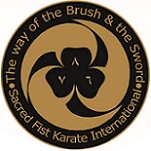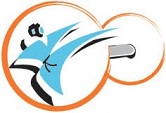|
A form of touch therapy that
utilizes the principles of Traditional Chinese Medicine , Acupressure
is a lot like Acupuncture . The same pressure points are used in both
systems. The only difference is that while Acupuncture relies on the
use of needles to stimulate the pressure points, Acupressure is
non-invasive. In Acupressure, the practitioner makes use of the finger
tips to apply pressure.
Herbal remedies, Acupuncture , Acupressure, Acutouch , Shiatsu , diet
, lifestyle changes, and meditation are all a part of the
comprehensive healing techniques found in China. Legend has it that
both Acupuncture and Acupressure developed when early Chinese healers
treated the wounds of warriors. These systems of healing came to the
West in the 1970s.
Acupressure, like Acupuncture, is based on the Chinese belief of Yin
and Yang. Unlike medical practices in the West, Chinese Medicine does
not consider the body as a separate entity. Both body and mind work
together to form the person. Thus disease cannot be diagnosed as the
breakdown of a purely physical system. The damage starts from the
inside and slowly spreads to the organs and expresses itself. The
ordinary man is so removed from his own body that he cannot detect the
underlying cause of his disease.
‘Chi’ is the fundamental life force or
energy that flows through the body and ensures the innate health and
balance of the body. There are 12 major meridians in the body that
support the transport of Chi. Acupressure works on the pressure points
and ‘unblocks’ the circulation of Chi so that it can once again flow
freely. Acupressure seeks to stimulate the points on the meridians
that pass closest to the skin. These are the points that are easiest
to stimulate using finger pressure.
Acupressure massage performed by a trained practitioner is used both
as a preventive as well as a therapeutic healing technique. Many
health conditions including but not limited to headaches, migraine,
cold, flu, arthritis, allergies, asthmas, sinus problems, sprains,
tennis elbow and even toothaches can be treated using acupressure.
Emotional and mental strain, tension and nervous tension can also be
eased using this technique. Acupressure also helps increase positive
energy within the person thus creating a sense of well-being. It can
be used to stimulate the immune system, thus keeping many ailments at
bay. Acupressure can also be used to alleviate sexual dysfunction.
The techniques of acupressure are so easy that it can even be used as
a self-treatment for common aches and pains. An acupressurist will
evaluate the symptoms and general health of the patient through gentle
palpitations. Then he begins his therapy on the different meridians of
the body.
Acupressure, unlike acupuncture is easy to learn and does not need any
formal knowledge. The techniques of acupressure are fairly easy to
learn and provide quick, cost-effective and immediate relief from
symptoms. Acupressure is used as a treatment by message therapists and
acupuncturists. Most massage schools in America include a course of
acupressure as part of their program.
A session of acupressure is
generally very relaxing and pleasurable. Some people experience
immediate relief while others take some more time to experience
benefits. For chronic conditions several sessions may be necessary.
Acupressure, acupuncture, and related practices Do-in, G-Jo, Shiatsu,
and Myotherapy, practiced in Asia for thousands of years, have only
gained wider acceptance in the West in recent times. Traditional Asian
medicine emphasizes personal responsibility for one's health.
Acupressure is a traditional Chinese medicine bodywork technique based
on the same ideas as acupuncture. It involves placing physical
pressure, by hand, elbow, or with the aid of various devices, on
different pressure points on the surface of the body (which may be far
distant from the symptom, related by what is called the meridian
system) to bring about relief through greater balance and circulation
of energies in the body (qi). It is intended to affect and balance the
energetic system of the body in order to treat the human body, mind,
emotions, energetic fields, and spirit.
While some practitioners believe that first hints of acupressure or
reflexology have been found in ancient Indian texts, the first
formally recognized mention of qi is in the Chinese writings of the
Shang dynasty oracle bones which were produced between the 16th to
11th century B.C.
Possibly the earliest evidence of use of the meridian system for
health purposes has been found in Europe, of all places. Ötzi the
Iceman, a 5,000 year old mummy found preserved in an Alpine glacier,
seems to have tattoos, some of which correspond to points that a
modern acupuncturist or tui na specialist would use to treat symptoms
of diseases that Ötzi seems to have suffered from, including digestive
parasites and degenerative bone disease. However, it is difficult to
speculate on the meaning of the tattoos as to whether they served a
decorative, religious, or a medical function.
Many East Asian martial arts also make extensive study and use of
acupressure for self-defense and health purposes (chin na). The points
or combinations of points are said to be used to manipulate or
incapacitate an opponent. Also, martial artists regularly massage
their own acupressure points in routines to remove blockages from
their own meridians, claiming to thereby enhance their circulation and
flexibility and keeping the points "soft," or less vulnerable to an
attack. Attacking the acupressure points is one theme in the wuxia
genre of movies and novels.
The concepts of internal and external environment are very important
to the philosophy of traditional Asian medicine. The human body, it is
believed, encloses a perpetual flow of bioenergy, or life-force,
called "chi, "ki" or "qi". This energy flows into the body and along
specific pathways called "meridians", influencing the functioning of
all the organs. In healthy individuals, this flow maintains a constant
balance with both itself and the external environment. When external
or internal events occur which disturb this balance, disease ensues.
Along the meridians are a large number of pressure points that act as
"valves" for the flow of chi. The stimulation of these points, when
properly performed, acts to restore balance to the internal
environment, thereby relieving symptoms.
To stimulate an acupoint properly on your own, you must apply deep
probing pressure after consulting your Doctor. |













